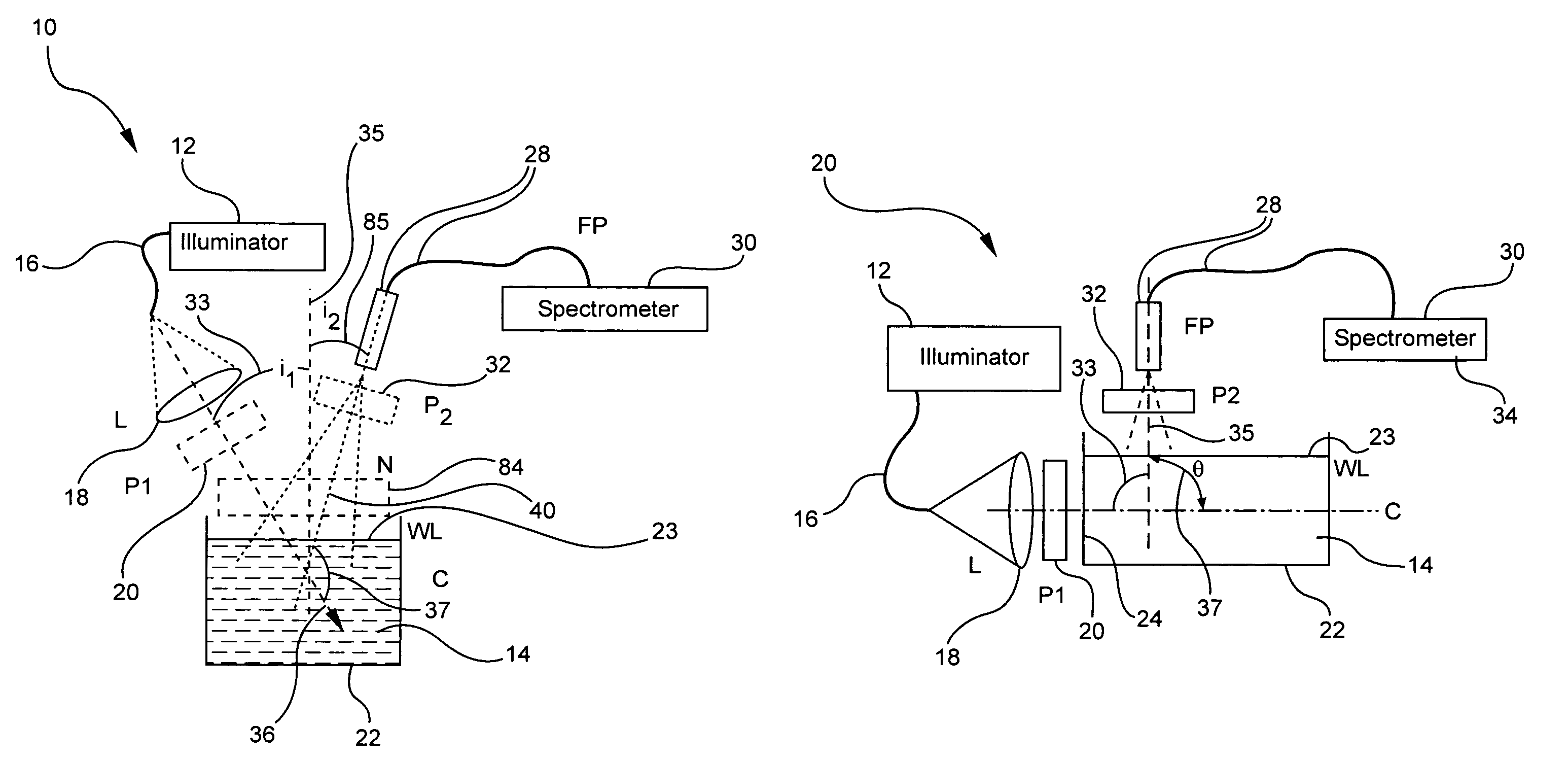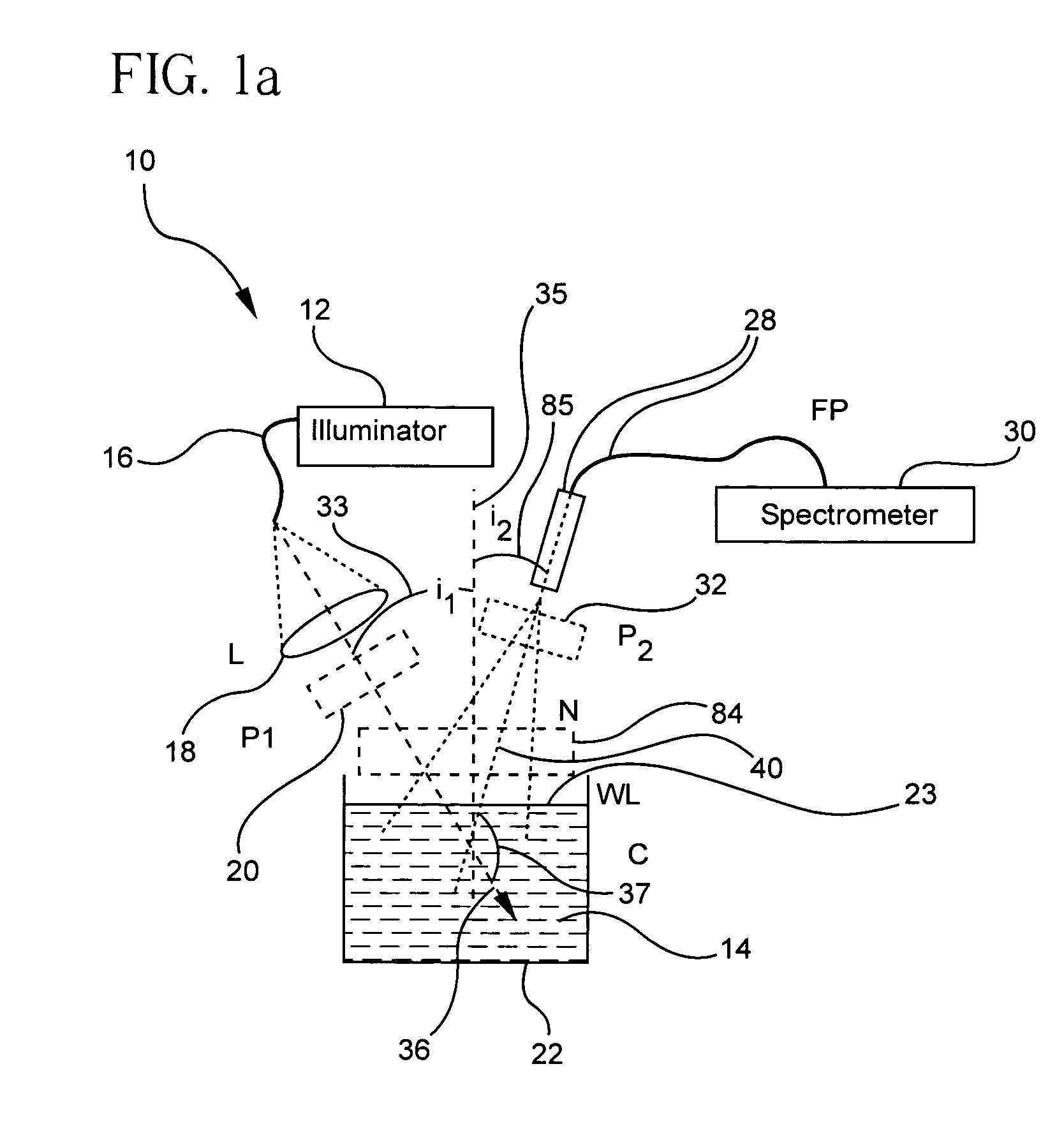Method and apparatus for the separation of fluoroscence and elastic scattering produced by broadband illumination using polarization discrimination techniques
a technology of polarization discrimination and separation method, applied in the field of fluorescence measurement, can solve problems such as complicated multiple-step procedures
- Summary
- Abstract
- Description
- Claims
- Application Information
AI Technical Summary
Benefits of technology
Problems solved by technology
Method used
Image
Examples
example
[0096]The method of the present invention was successfully applied in the laboratory to four types of algae with different particle shapes (spheres, ellipsoids, plates) and different sizes 5-18 microns (μ), and concentrations up to 4×106 cells / ml. The method was also tested with in-situ field measurements along eastern Long Island. The method of the present invention allows the extraction of fluorescence for the whole range of solar zenith angles of illumination from 0° to 90° for polarized light sources and up to 45° for unpolarized light and sunlight. In this example, the detector probe was oriented normal to the sample, i.e., vertically. In laboratory experiments, this was found to hold true even with surface waves when signal averaging of the detected signal is used. Comparison of this method for polarized and unpolarized illumination with other methods used to estimate Chlorophyll concentration showed very good correlation with the calculation of fluorescence height over baseli...
PUM
| Property | Measurement | Unit |
|---|---|---|
| scattering angle | aaaaa | aaaaa |
| wavelength range | aaaaa | aaaaa |
| solar angle | aaaaa | aaaaa |
Abstract
Description
Claims
Application Information
 Login to View More
Login to View More - R&D
- Intellectual Property
- Life Sciences
- Materials
- Tech Scout
- Unparalleled Data Quality
- Higher Quality Content
- 60% Fewer Hallucinations
Browse by: Latest US Patents, China's latest patents, Technical Efficacy Thesaurus, Application Domain, Technology Topic, Popular Technical Reports.
© 2025 PatSnap. All rights reserved.Legal|Privacy policy|Modern Slavery Act Transparency Statement|Sitemap|About US| Contact US: help@patsnap.com



